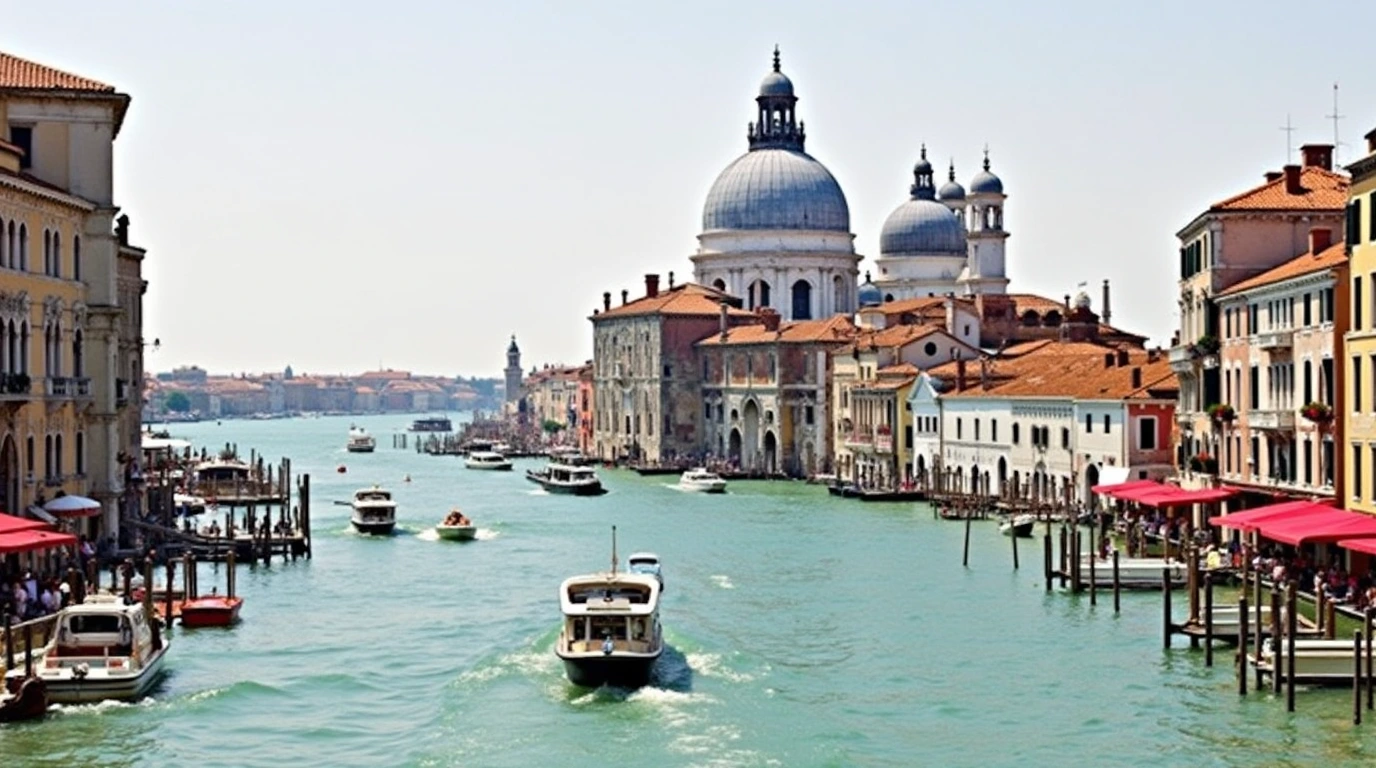When to Go to Venice: Complete Guide to Choosing the Best Time
Table of Contents
Introduction
When to Go to Venice, the floating city of canals and romance, captures the hearts of visitors with its timeless beauty. Few places in the world rival the charm of St. Mark’s Square at dawn or the magic of a gondola ride under the Rialto Bridge. However, deciding when to visit Venice can make or break your experience. This guide will help you choose the ideal time to visit based on your preferences for weather, crowds, and budget.
Best Times to Visit Venice (High Season)
Months of April, May, June, September, and October
If you dream of wandering Venice’s cobblestone streets under sunny skies and enjoying pleasant temperatures, April, May, June, September, and October are your best bets. These months offer mild weather, typically ranging between 60 and 75 degrees Fahrenheit, perfect for exploring without the stifling heat of summer.
However, the beauty of these months comes at a cost. These are the busiest and most expensive periods to visit Venice. The city is bustling with tourists, and accommodation prices are at their peak. If you don’t mind the crowds and are willing to splurge for the perfect weather, this is the time to go.
Summer in Venice
Summer in Venice (July and August) offers moderate temperatures compared to other Italian cities, with highs generally between 70 and 80 degrees Fahrenheit. Hotels often provide air conditioning, a must-have for the warm afternoons. Keep in mind that summers can feel humid due to the lagoon, so staying hydrated is crucial.
While summer is not as crowded as spring or fall, it’s still a popular time to visit. Expect lively piazzas, long lines for attractions, and higher-than-average prices.
Spring and Fall
Spring and fall are delightful in Venice, but they come with a caveat: temperatures can be unpredictable. Early spring mornings and late autumn evenings may feel chilly, and heating isn’t always available in hotels until the official winter season begins. Packing layers will ensure you’re prepared for any fluctuations in temperature.
Alternative Periods to Consider (Low Season)
November to March
For those seeking a quieter Venice, November to March is the low season, excluding the Carnival period. The weather is mild, with temperatures ranging from the mid-30s to the mid-50s Fahrenheit. However, visitors should be prepared for the possibility of acqua alta (high water) flooding, which can temporarily limit access to certain areas, including St. Mark’s Square.
During this period, tourists are sparse, queues are shorter, and accommodation prices are significantly lower. For budget-conscious travelers or those craving a more peaceful Venice, this can be an excellent time to visit.
February Carnival
If you’re drawn to vibrant festivities, February’s Carnival transforms Venice into a citywide celebration. The event features elaborate costumes, concerts, and entertainment for all ages. While this is a highlight of the Venetian calendar, it’s important to note that hotel prices soar during Carnival, and crowds rival those of the high season.
March: A Perfect Compromise
March strikes a balance between low-season prices and improving weather. Temperatures begin to climb, and the city feels more alive as it transitions out of winter. This makes it a great option for those who want to experience Venice without the extremes of summer heat or winter chill.
Specific Weather Conditions and Floods (Acqua Alta)
The Two Main Weather Regimes
Venice’s weather is shaped by two predominant wind patterns:
- South-east winds from the Balkans bring cold, dry weather, perfect for brisk walks and crisp photos of the city.
- Sirocco winds from North Africa carry warm, humid air that can lead to flooding, known locally as acqua alta.
Dealing with Acqua Alta
Flooding, while inconvenient, doesn’t have to ruin your trip. Acqua alta is most common in late autumn and winter and typically recedes within a few hours. During these times, the city installs wooden walkways to help pedestrians navigate the affected areas.
Practical tips for dealing with acqua alta include:
- Purchasing rain boots, widely available in local tobacco and souvenir shops.
- Checking tide forecasts to plan your day around potential flooding.
Additional Resources and Practical Tips
For more in-depth planning, consider these resources:
- Main Italian Holidays and Festivals: Understanding when Italians take their vacations can help you avoid peak domestic travel times.
- Tips for Planning Your Stay in Venice: From transportation advice to accommodation recommendations, these tips can streamline your trip.
- Recommended Itinerary for Italy: If Venice is just one stop on your Italian adventure, a well-structured itinerary can ensure you make the most of your time.
Special thanks to Gene Openshaw, co-author of Rick Steves’ guide to Venice, for inspiring parts of this article.
Conclusion
When it comes to deciding the best time to visit Venice, it all depends on your priorities. High season offers ideal weather but comes with crowds and higher costs. Low season provides peace and savings but may include cooler temperatures and occasional flooding. Whatever your preferences, careful planning can ensure your trip to Venice is as enchanting as the city itself. Start preparing now and make memories that will last a lifetime!
There are no reviews yet. Be the first one to write one.








One Comment
Comments are closed.